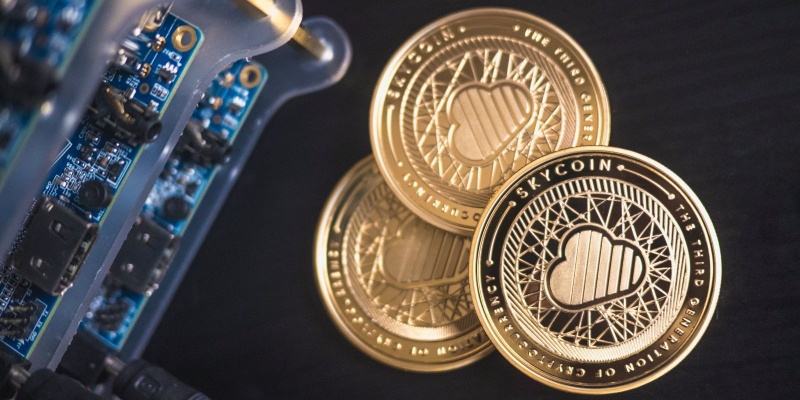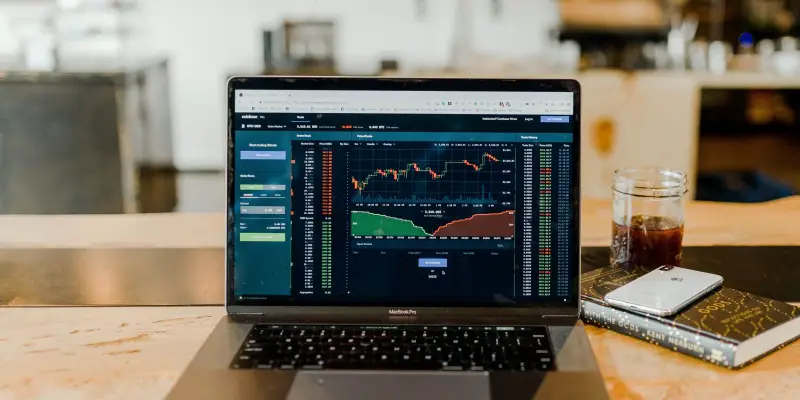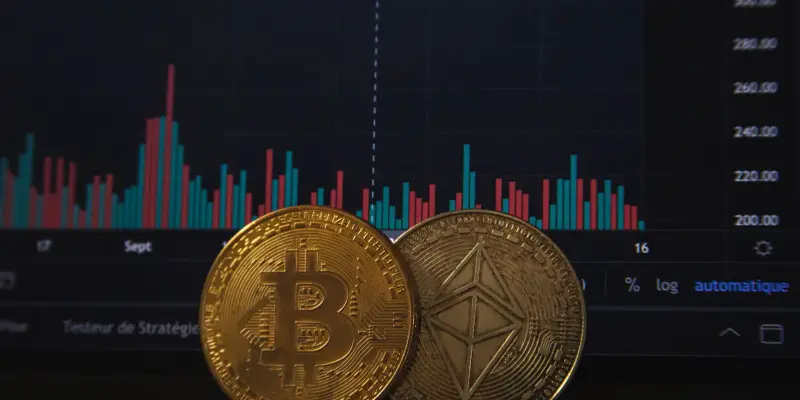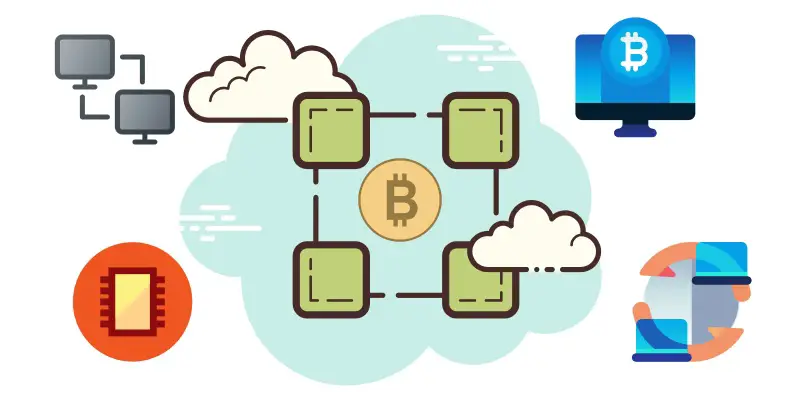If you have heard about bitcoins, you might have heard the term “blockchain” connected with them. If you are interested in investing in cryptocurrencies, you probably might know that these currencies run on a technology named “blockchain”.
But, if you have never heard of the term “cryptocurrency”, then a brief idea about it is that it’s a type of digital or virtual asset that can be used to purchase goods or services online.
Cryptocurrency, also known as virtual currency, functions on a network that is distributed over a wide range of computers. The network is decentralized so that it enables the currencies to be used for transactions without the involvement of banks or governments.
Cryptocurrency has its name derived from cryptography and uses encryption techniques that are used to secure the network.

What is Blockchain Technology?
Blockchain is a decentralized distributed ledger technology (DLT) that can also be described as a specific type of database. It uses crypto hashing techniques that allow the data inside to be unalterable and transparent.
To understand more about a block, let’s learn what a database is at first. A database is the accumulation of information that is stored electronically on a computer system.
Information (which is also referred to as data) found in databases is structured in a table format. This format helps us to search for data easily and to filter this data for a piece of specific information.
Although it functions similarly to an excel spreadsheet, it is handled by large enterprises. Here is why it is different from an excel spreadsheet. Spreadsheets are usually used by a person or a small group of people.
Spreadsheets can only store limited amounts of information. But, databases are usually used by enterprises to store large amounts of data.
The data that is given as input to these databases can be filtered, accessed, and manipulated quickly by many users at once.
The databases owned by businesses function on servers that are made of powerful computers. These servers are also sometimes built using hundreds or thousands of computers.
This is done so that the servers can have high computational power and storage capacity when many users are accessing and manipulating the information simultaneously.
Both spreadsheets and databases can be owned by small or large businesses. It is often managed by a single individual who has control over the data within.

How is Blockchain different from a database?
While a blockchain stores information just like databases, there are quite a few areas in which it’s different. Let’s review these few areas where this technology differs in:
Storage
Blockchain structures the data that it has collected into groups. These groups of information are also known as blocks. A block has a specific storage capacity, and once it is all used up the block connects itself to a previously filled block.
The connected blocks then form a chain, thus the name blockchain. When a new block has all the information compiled into a group, it is then added to the chain.
Whereas a database structures its data into tables, this technology structures its data into a group and then connects them by chaining them together with previous blocks of information.
Blockchain is also a system that makes an irreversible timeline of data. When a block is filled in with information, it is given a timestamp of when it was added to the chain.
Decentralized
Blockchain technology is also decentralized in nature which means that there is no involvement of a third party. Usually during transactions, while purchasing goods and services, it involves a third party like the banks and governmental organizations.
For example, if you wish to transfer money from one country to another, then you would have to pay the interest rates and exchange rates specified by the banks or governmental organizations as a fee for transferring money from one bank to another.
Whereas cryptocurrencies that use this chain technology are decentralized, which means you wouldn’t have to pay any fee for transferring the virtual currency from one account to another.
Transparency
Just like a database that has a server to store information that is stored across multiple computers, blockchain also stores its information across multiple computers which are called nodes.
All nodes have the list of transactions done using the specified cryptocurrency. If one node has an error, then it uses other nodes as its reference point to correct itself. There is no one node that can alter information held within it, thus making the blockchain irreversible.
If a change needs to be made, then the majority of the computers that make up the computing power would need to agree on the said changes.

How does Blockchain work?
Here are the three important concepts that help this technology to work: blocks, nodes, and miners.
Blocks
Each block in a chain consists of three basic elements:
- Data: the information stored inside a block is also called data.
- Nonce: It is a 32-bit whole number. It is randomly generated when a block is created which becomes the block header hash.
- Hash: it is a 256-bit number that is included in the nonce.
The cryptographic hash ensures that the data in the block remains unalterable.
Miners
Miners are entities that create new blocks on a chain. This process is called mining.
Miners use special software to solve incredibly complex math problems of finding a nonce and generating a hash before adding them to a chain.
When a block is successfully mined, the changes are then reviewed and accepted by all the nodes of the network.
Nodes
No one computer or organization can own a blockchain. This technology is also a distributed ledger that connects many computers or any kind of electronic device.
These nodes contain copies of the blocks in a chain and provide the computational power to keep the network functioning.
When a network adds a newly mined block, then all the nodes must algorithmically approve the block.
Adoption of Blockchain Technology
Blockchain’s most well-known use is in cryptocurrencies like Bitcoin, Ethereum, Litecoin, etc. These currencies use blockchain to act as a public ledger that has a cryptographic security system.
Through this technology, online transactions using cryptocurrencies are always recorded and secured. There are many kinds of research done to unlock the potential of blockchain technology.
Some researchers have unlocked newfound uses of this technology which have broadened the technology of blockchain to various sectors like media, identity security, etc.
Different types of blockchain technology could be used according to organizational needs to learn more about these types you can click on this link: https://searchcio.techtarget.com/tip/Permissioned-vs-permissionless-blockchains-Key-differences
Blockchain’s Security
One of the major advantages of using blockchain is that it provides a high level of security. Once a block is added inside a blockchain, it is extremely difficult to change the details inside the block.
The reason being, each block has its hash code and the hash code of the previous block. If a hacker tries to change the information, then the hash code of the block will also change.
Since all blocks are stored in multiple nodes, the hacker again would be required to change the information details in all the other blocks which is quite difficult.
Therefore, hacking and manipulating data in a blockchain requires a massive amount of computing power.

Advantages of Blockchain
There are several advantages of using blockchain technology:
- Security: It is nearly impossible to corrupt the information to a blockchain as the information is shared with millions of nodes (or electronic devices) the moment a new block is created
- Efficiency: Transactions are more efficient since it is a decentralized network with no involvement of third parties.
- Cost: transferring cash from one bank to another may include costs, however, since transactions in a blockchain are done between two parties directly, there is no need to pay any extra costs.
- Accuracy: Even if a node goes corrupted, there is no need to panic as a copy of all ledgers is distributed across all nodes. This allows you to receive accurate information about a transaction anytime.
- Trustworthy: participants in this network can trust each other as reverse-engineering or corrupting the data nodes are difficult to manipulate.No one node can compromise the security of the transactions.
Disadvantages of Blockchain Technology
Although there are many advantages to blockchain technology, there are also some noticeable disadvantages like:
- Blockchain uses massive computational power as it requires millions of nodes to store copies of the blockchain.
- Changing data in blockchain can be quite difficult as it requires a lot of work.
- Users are required to keep a track of their private keys as they may be susceptible to hacking.
- Storage can overgrow in time thus problems might arise if the ledgers are too big to download on a computer to store information.
Currently, there are a lot of blockchain-based projects that are not limited to recording transactions. For example, blockchain technology is often used for voting purposes in democratic states. This would ensure a transparent voting system.
While incredibly technical, blockchain technology powers the most in-demand services in today’s highly connected world.
It’s interesting to trace the workings of services like cryptocurrencies and invest for the future, where such currencies will define money and transactions in a new way.








